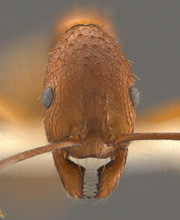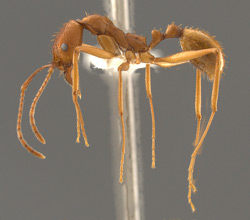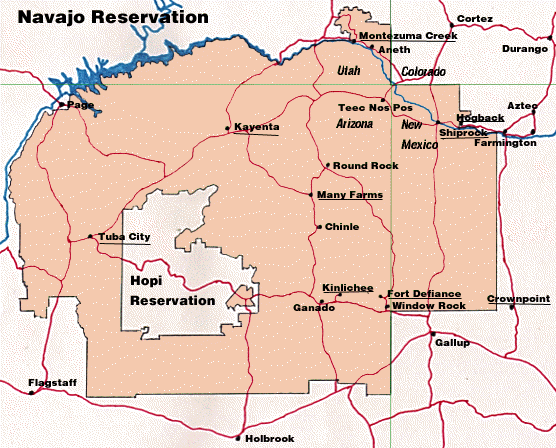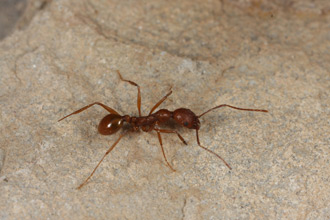- Identification
- Aphaenogaster huachucana workers differ from Aphaenogaster texana by their larger size, heavier and more rugose sculpture, a more abruptly elevated rear edge of the mesonotum and a prominent triangular lobe at the base of the scape.
- Biology
- Distribution
- Range
- United States. Arizona
- Navajo Reservation Records
- Found just outside of the park boundary of Canyon De Chelly National Park, Arizona; south rim Spider Rock viewing area. Several foragers found along a dry wash in a Juniper-Pinyon Woodland site. Foragers active in the very late afternoon and during the night. Collection locality: 36° 05’ 38”N; 109° 22’ 28”W, 2090 meters elevation, 23 August 2009, collectors Marek Borowiec and Gary D. Alpert.
modified from from Creighton (1951):
The five nests of huachucana which were found during the summer of 1950 were all situated between the 7000 and 8000 foot levels. The area in which they occurred lay between the head of Carr Canyon and the lower slopes of Carr Peak. In this same area were taken representatives of typically northern ant groups (Polyergus, Myrmica, Raptiformica, Camponotus sen. str., Stenamma, etc.). Since the Sonoran elements of the evergreen oak belt are absent at these elevations, the ant fauna above the 7000 foot level has an entirely different character from that of the 6000 foot level. Its affinities are Transitional or Canadian and the presence of huachucana in this association offers a good demonstration that this insect belongs with the northern elements of the biota. It may be added that all the nests of huachucana, including the type nest, were situated on steep slopes. They were placed in shady aspen groves, in the lighter shade of pine groves or in full sun. Some were built in the soil under a covering stone, others in the soil which had accumulated between the stones in a rock slide. In view of the fact that texana is quite fussy about its nest sites, the greater tolerance of huachucana in this respect is surprising.
- Additional Notes
- The association where huachucana is found is Shreve's "northern mesic evergreen forest". This association occurs in various parts of Arizona and its constituent plants vary somewhat with latitude, making it difficult to easily characterize. In the Huachuca Mountains the northern mesic evergreen forest is predominantly a zone of pines. At the lower edge of this pine belt it mingles with the upper edge of the evergreen oak belt. At the 7000 foot level on the northeastern slopes the pines are the dominant element of the flora. At the 8000 foot level the stand of pine is frequently interrupted by aspen groves. These groves continue to the tops of the peaks but do not form a belt. According to Shreve the pines may be replaced by spruce and fir at elevations above 9000 feet. If this is true in the Huachucas the spruces and firs must be limited to a small area at the top of Miller Peak and Carr Peak.
- Etymology
- Geographic. The type specimens are a collection from Ramsey Canyon in the Huachuca Mountains. Huachuca (wa-CHOO-ka) is an Apache word for thunder.
- Description
- Types
- Types in my collection and in the collection of Dr. W. M. Wheeler.
- As stated in Creighton (1934)
- Type Locality
- Ramsey Canyon, Huachuca Mountains, Arizona, at an elevation of 7000 feet.
- Literature
- Creighton, W. S. 1934. Descriptions of three new North American ants with certain ecological observations on previously described forms. Psyche. 41:185-200.
- Creighton, W. S. 1951. Studies on Arizona ants. 2. New data on the ecology of Aphaenogaster huachucana and a description of the sexual forms. Psyche. 58:89-99.
- A note about these publications. The literature cited here is not meant to be an exhaustive list of papers published about this species.
Original Combination - Aphaenogaster (Attomyrma) huachucana - Creighton (1934)
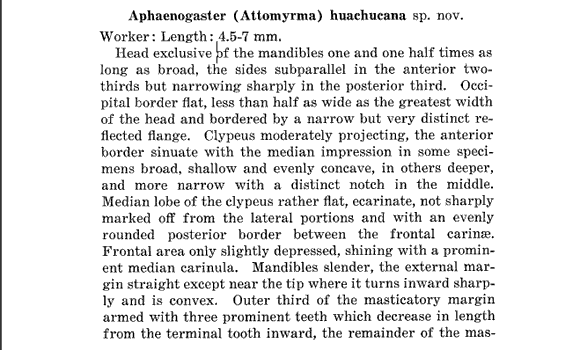

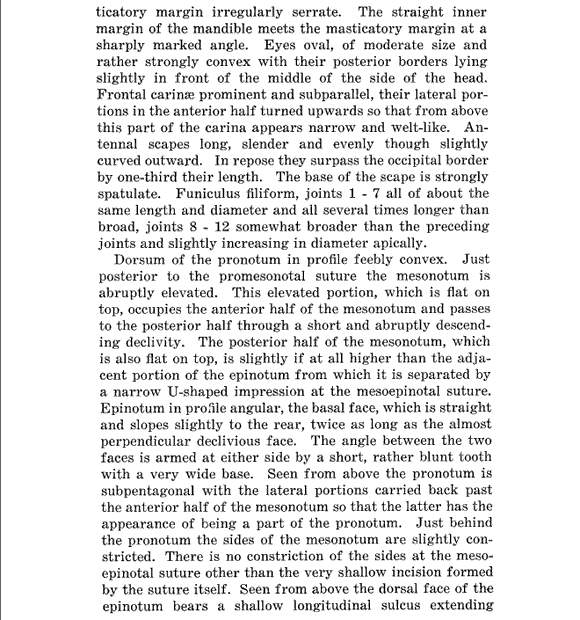
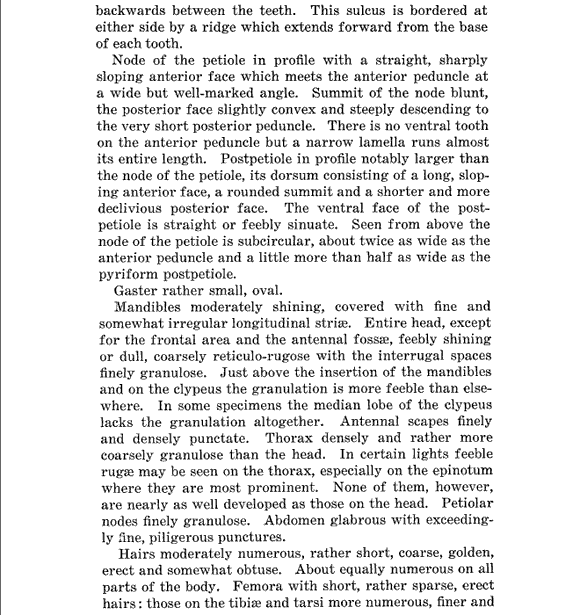
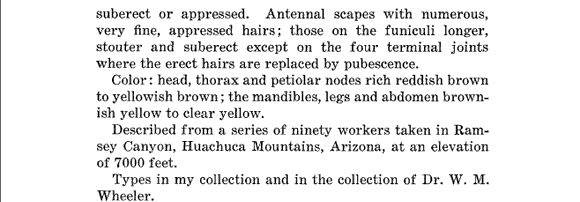
Creighton (1952) later described the queen and male:

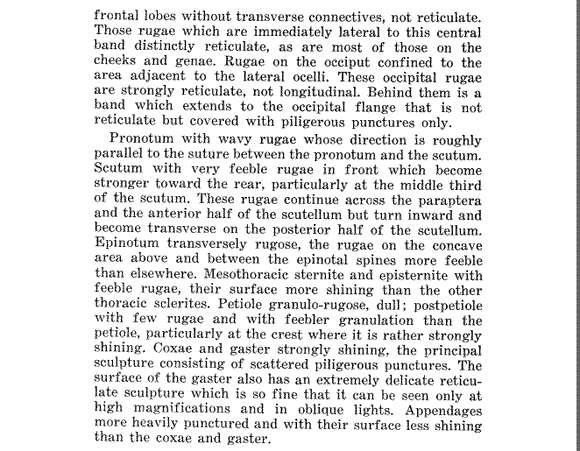

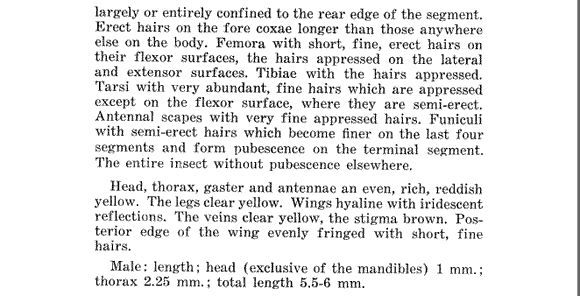
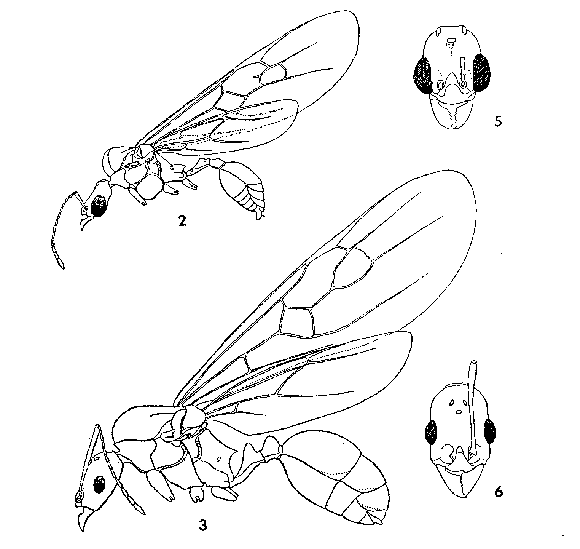
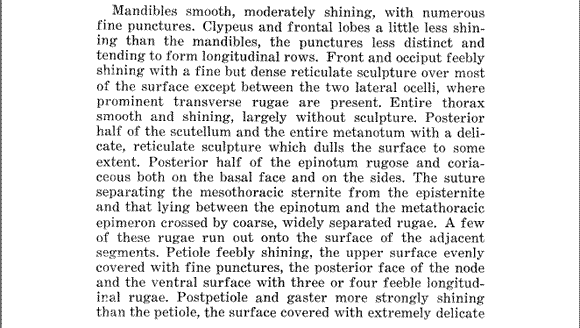
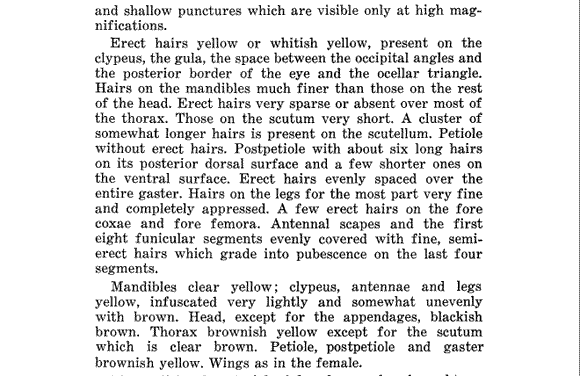
Page authored by David Lubertazzi and Gary Alpert
